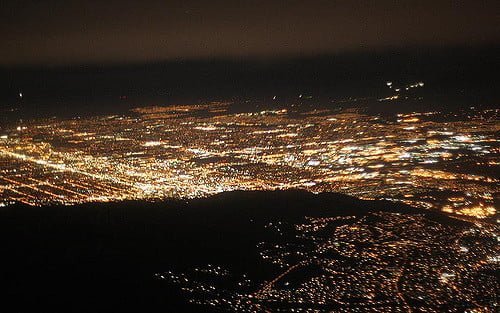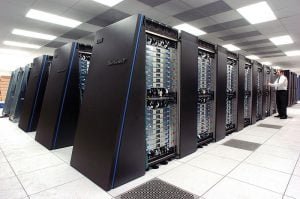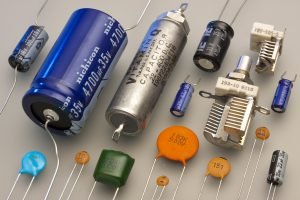Light plays an important role in our life. It is one of the sources of our energy. Light gives us safety in the night and most of the crimes take place in the absence of light. Therefore we expect our surroundings, streets and overlooked corners must be lightened with street lights. With rapid economic development in villages and urban areas, the use of light (especially unnecessary light) is increasing day by day. We all are aware of air, soil, water pollution but do not have any idea about light pollution. The shocking fact is that the excessive amount of light can be harmful to all the living species and the environment of the earth. This excessive, misdirected, or inappropriate outdoor lighting causes light pollution. Excessive light pollution hampers the clear view of the Universe, leading to a rise in energy consumption, disruption in ecosystems, affects the health and safety of humans and wildlife and it also affects astronomical research. For billions of years, life on Earth existed in a rhythm of light and dark that was created only by the illumination of the Sun, Moon, and stars. The excessiveness of artificial lights increases the cities glow at night which changes the natural day-night pattern and the delicate balance of our environment is disturbed. Light pollution is one of the rapidly growing forms of environmental pollution as it has an adverse effect on both human health and the environment. With globalization and economic development, the small town and urban areas are also waking overnight. Large shopping malls, shops, office buildings remain illuminated all over the night with the excessive amount of artificial light. But most of these lights are used unscientifically and unnecessarily. Those lights scattered from different sources disturbed the clear view of the night. The astronomical researcher is facing severe problems due to this. A team of researchers from the University of Padua studied that two-thirds of the world population is deprived of the view of the clear sky. They observed a layer of glow in the night sky mainly in metro cities. There are four components of light pollution –
(i) The Urban sky glows- The brightening of the night sky over inhabited areas. This happens due to the scattering of light from a badly directed source (like street light) and the reflection of light from different planes. We can see a glow layer over the area.
(ii) Light Trespass: Light is spreading on the unwanted or unneeded area, causing misuse of light energy.
(iii) Glare: If the sensation created by luminance within the visual field is sufficiently greater than the power of our adaptation, our eye feels discomfort, annoying as well as visual performance decreases. This makes dimmer objects harder to observe and increases the risk of danger.
(iv) Clutter: This is mainly due to bright, confusing, excessive artificial lighting that is brighter and on longer than required for a specific activity.

Author: Makelessnoise
Source: https://www.flickr.com/photos/makelessnoise/291494637
Most people don’t know about the negative impact of excessive light at night on human health and the environment. Exposure to artificial light prevents many trees and other plants from adjusting to seasonal changes. It also affects the photosynthesis process. The wildlife which depends on trees also suffers due to this. Insects flying around night lights become too exhausted to feed and reproduce due to light pollution, causing their population decline which further hampers the food chain. According to the report, 50,000 street lights in Zürich are estimated to kill more than 1 million insects per night. Birds are also in danger because of the decline of the population of insects. Some species are entering in endanger category due to light pollution. Plants and animals, including humans, obey the 24-hour day/night cycle which is known as the circadian clock. Light pollution affects this physiological process. These processes include brain wave patterns, hormone production, cell regulation, and other biological activities. Melatonin is a hormone produced by the pineal gland and secreted at night, which regulates our biological clock. According to WHO, the biological clock was deviated in humans due to excessive use of artificial light at night. Deviation of the process can result in cancer, cardiovascular disease, insomnia, depression, etc. Humans suffer from diabetes, mental stress, fatigue, vision problems due to light pollution. Light pollution results in energy waste, money waste, and awkward modification of the earth’s surface and atmosphere. Scientists are raising their voices against this for the last four decades. The International Dark-Sky Association (IDA) is a recognized organization combating light pollution worldwide. According to IDA clear sky is our fundamental right and we should stress proper scientific lighting. IDA works with the people, city and urban planners, legislators, lighting manufacturers, parks, shopping malls, and protected areas to grant and implement smart lighting choices. Some states of the USA have passed an “ Anti-light pollution law” to cope with this type of pollution. American Medical Association has issued some guidelines regarding proper uses of artificial light. The different volunteer organization is working to aware people and helping them to use low wattage light. The street light should be sensor-controlled to reduce misuse. Research suggests that too much light does not necessarily improve visibility. So we need smart scientific lighting to reduce light pollution. It should be kept in mind that no light should ever be emitted above the light source’s horizontal plane. Improved technology and advanced government policy can also help us in this matter. Some cities (like Paris) have observed a day with no lighting in the night which was further followed by Mumbai. Awareness among people can only control light pollution. So we expect that education of light pollution and its consequences should be introduced in school textbooks along with air, water pollution.
Written by: Dr. Ayan Mukherjee



